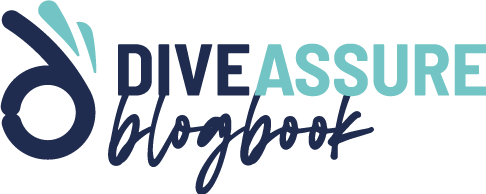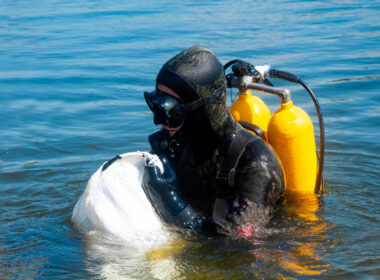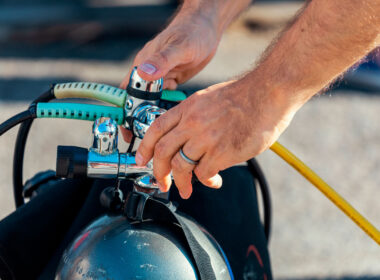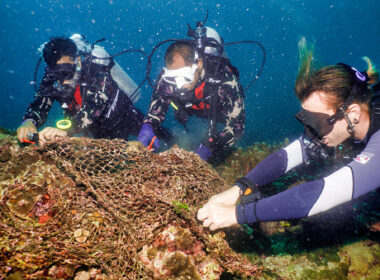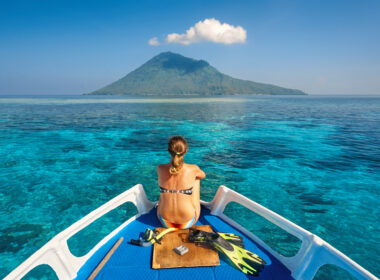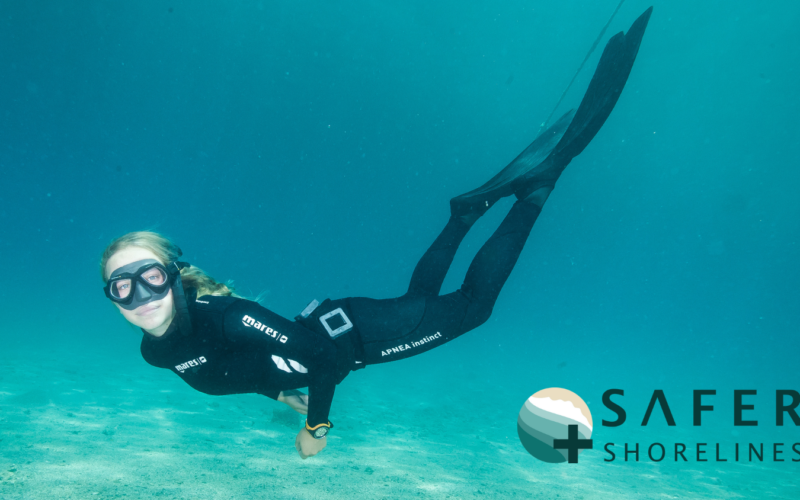Safer Shorelines is an organization that promotes water safety and supports water sports enthusiasts around the world and aims to improve in-water safety, especially at the surface. Together with the help and cooperation of other like-minded organizations, Safer Shorelines has compiled practical tips and safety rules that are available to all professional water sports operators, associations, training organizations, and private users.
Why Safer Shorelines?
The foundation of “Safer Shorelines” is the result of an incident that occured in 2019 when a speedboat driving too fast near the shore of Croatia collided with Verena Heinz, a 20-year-old freediver. Verena was an ocean-loving, water-loving freediver who had a positive influence on countless people in her young years. Her senseless death is an opportunity to improve safety and do everything possible to prevent accidents of this kind.
What is Safer Shorelines Mission?
In addition to safety tips and the dissemination of rules of conduct in the field of water sports, “Safer Shorelines” is committed to promoting water safety for water sports of all kinds and increasing awareness of the importance of clear and transparent regulations. We work to ensure that legislators recognize the urgency of water safety measures and create opportunities for their implementation.
With our commitment, we aim to enhance mindfulness and proper rule interpretation so that everyone can enjoy the beauty and freedom of water sports safely. We hope that Verena’s legacy will contribute to preventing similarly needless and, above all, avoidable accidents in the future—ultimately saving lives.
We asked Dieter Heinz, founder of Safer Shorelines a few questions about the current state of water safety and what we can do to improve it:
Interview with Dieter Heinz (Founder of Safer Shorelines)
The Inspiration Behind Safer Shorelines
“The accident involving my daughter, along with similar tragic incidents among my friends, motivated me to take action,” Heinz explains. “I realized that while there are many training organizations for water sports, there are no universally accepted safety rules. In skiing, for example, the Federation of International Skiing (FIS) has 10 well-known slope rules, visible everywhere from lift stations to ski schools. Inspired by this, I decided to develop a similar system for water safety and in-water sports through Safer Shorelines.”

Collaborating for a Safer Future
Over the past two years, Safer Shorelines has worked with safety consultants and coaches to create 10 universal safety rules for water sports enthusiasts. Heinz highlights that making these rules simple yet comprehensive was a challenge, but the final guidelines have been well received.
Training organizations, including Scuba Schools International (SSI) and the International Aquanautic Club (IAC), have committed to incorporating these safety rules into their training materials. Additionally, SSI has introduced a ‘Safer Shorelines Ambassador’ certification, which is available to DiveAssure members as well.
Addressing the Unique Safety Needs of Divers and Freedivers
While Heinz comes from a diving background, he emphasizes that Safer Shorelines is not limited to diving and freediving. “Diving training is already well-structured. Our goal is to raise awareness across all water sports. If boaters respect speed limits, divers always use signal buoys, and safety tips are clearly visible at training centers, entry points, and on boats, then we are making progress.”
The Role of Education and Awareness
Heinz believes that safety education is key: “Training organizations have done excellent work for years. Safer Shorelines doesn’t seek to replace them but to complement their efforts with concise and universally applicable safety principles. Our goal is to provide simple, accessible tips that encourage safe and environmentally responsible water sports.
For almost two years, we have been working on developing ten universally applicable water sports rules and have encountered a wide range of requirements in the process.
A new app and a modular poster system now offer the opportunity to adapt rules to any location and specific conditions. Water sports centers can submit their own safety rules, and we will create a short online course and a quiz based on them. Customers can playfully learn more about local safety regulations. The confirmation through an online certificate assures rental stations or water sports schools that their customers have engaged with the topic—creating a classic win-win situation.
At Boot Düsseldorf 2025, Heinz had the opportunity to present the project to major diving center operators. Implementation has already begun in several countries. One particularly exciting milestone was the agreement with the General Manager of The Breakers Hotel in Soma Bay, Egypt. For the first time, the rules were adapted for a hotel, and the QR code with the regulations is now accessible not only on the beach but also in all hotel rooms and the APP.
Heinz offers this opportunity to every water sports business. He firmly believes that safety will become a project for each individual operator, ensuring that the topic is pursued with great initiative.
As a non-profit organization, Safer Shorelines offers its resources freely, encouraging other training organizations to adapt and expand upon them.
Future Goals and How You Can Help
One of Safer Shorelines’ most ambitious projects is the ‘1000 Swim Instructors Program’, launched in 2021. Through this initiative, the organization trains and funds new swim instructors who, in return, commit to teaching at least 10 children to swim for free within two years. Companies that sponsor their employees’ training as swim instructors also benefit, as those employees can then teach their families and communities.
In the Maldives, Safer Shorelines is working to train kindergarten and primary school teachers as swim instructors, addressing drowning risks among young children. Another key initiative is the development of a water sports safety quality seal, which will help water sports centers adhere to higher safety standards through checklists and a database.
“We depend on financial support and volunteers,” Heinz emphasizes. “Anyone passionate about water sports can contribute. Whether it’s spreading awareness, funding training programs, or helping implement safety measures, every effort makes a difference.”
The Ultimate Goal: A Global Safety Network
Safer Shorelines envisions a worldwide improvement in water sports safety, with national organizations in different countries following best practices and training protocols. The plan includes:
- Establishing national organizations in various countries.
- Creating hotlines and volunteer programs.
- Translating safety materials into multiple languages.
- Partnering with sponsors and existing water sports organizations to maximize reach and effectiveness.
By identifying and collaborating with relevant partners, Safer Shorelines seeks to create an international framework that ensures safer shorelines for everyone.
Conclusion
Water sports should be thrilling but safe. With proper education, awareness, and regulatory support, many tragic accidents can be prevented. Safer Shorelines, through its initiatives and collaborations, is leading the way in making our waters safer.
For those who love and respect the ocean, getting involved in Safer Shorelines—whether through advocacy, training, or simple awareness—can help turn Verena Heinz’s legacy into a lasting impact that saves lives.For more information, visit Safer Shorelines’ official website or explore ways to become a Safer Shorelines Ambassador today.
For inquiries, contact: office@safershorelines.com
